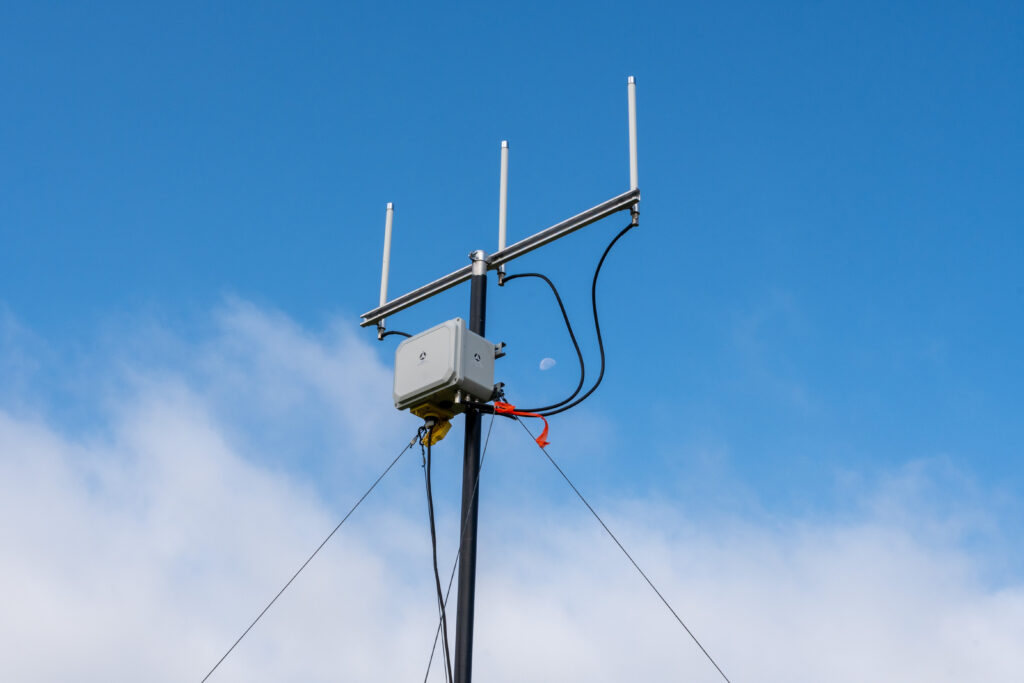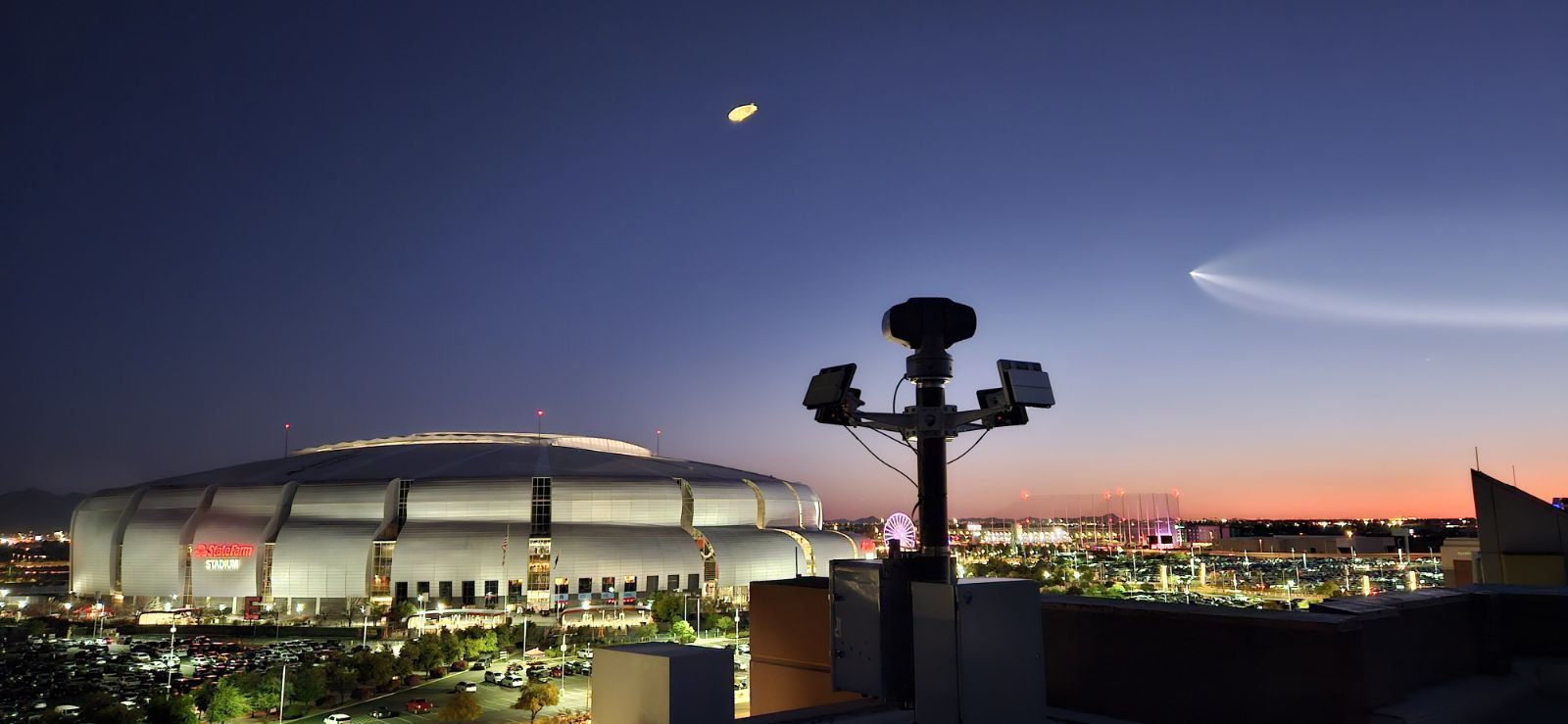By Michelle Duquette (CEO, 3 MAD Air) & David Lewin (Host, This Week in Drones)
The conversation about drones and remote identification (Remote ID) continues to race ahead, but too often, leaves out the very sector that brought so much urgency to the table: energy utilities. It’s time to refocus on the unique opportunities and profound stakes that the energy sector brings to this discussion. As Travis Moran of Southeast Electric Reliability Corporation (SERC) explained on a recent “This Week in Drones” (TWID) podcast, drones can change the game for power companies, but only if policy and technology keep pace with operational and security needs. (Watch a summary of the TWID podcast discussion on the Autonomy Global Network here).

Drones in the Energy Sector: Where Innovation Meets the Grid
Utilities have become industry leaders in drone deployment for one central reason: operational safety and cost reduction are non-negotiable. Inspecting transmission lines, substations and generation sites with unmanned aircraft has meant fewer dangerous climbs, fewer helicopters and better data, especially as platform reliability improves and costs decrease.
As Moran noted, “From the operational side in energy, everything is seen through the prism of cost—can drones reduce the cost of certain activities and also can they increase safety? Because safety at electric utilities is paramount. Any task you can automate to remove risk is looked upon very favorably.”
This “safety first” mindset puts utilities at the intersection of innovation and risk. Drones help guard against outages, fires and accidents caused by physical inspections. But they also introduce new vectors of security concern, not just for the utility, but for the nation.
Security, Compliance and the Reality of Critical Infrastructure
Energy utilities aren’t just worried about technological glitches. They operate under intense federal mandates, such as North American Electric Reliability Corporation Critical Infrastructure Protection (NERC-CIP) standards governed by the Federal Energy Regulatory Commission (FERC) and Southeastern Energy Reliability Council (SERC), that require robust physical and cybersecurity for all critical assets.
Moran detailed how asset owners must build new infrastructure, from large solar farms to wind installations, with layered security in mind. This requires constant evaluation of “are we ahead or behind the curve on compliance?”
When drones enter utility airspace, whether for legitimate inspections or with malicious intent, the security response must be immediate and informed. The stakes are uniquely high. A single event can mean cascading disruption across hundreds of miles of grid that affects millions.
The Energy Sector’s Challenge: Situational Awareness
Energy operators do tremendous work monitoring for threats, but as Moran highlighted, “Many of the biggest security issues are not the result of someone doing something wrong. It’s a lack of situational awareness about things that don’t look right until it’s too late.”
Right now, legal flight restrictions over infrastructure remain patchy. Utilities must document and report suspicious activity. However, the lack of real-time, context-rich data often leaves law enforcement and security teams guessing. The current version of Remote ID, a broadcast-only model, can only go so far to address these awareness gaps.
Remote ID as an Energy Security Asset
The energy sector demands a more ambitious vision for Remote ID. Imagine a system where law enforcement or critical infrastructure security staff responding to an incident could:
- Instantly verify a drone operator’s legal permissions and mission objectives.
- Check for flagged individuals, such as those with restraining orders or prior arrests, via integration with government databases.
- Receive automated alerts about high-risk drone patterns around substations or power plants.
- Get actionable insights in real time, not hours later.
As Moran explained, “If Remote ID were interfaced with other government data systems, law enforcement could get contextual information in the moment, before the drone (or human operator) causes harm.”

Such a solution would not only secure the grid. It would also turbocharge everything drones already do to enhance grid reliability, disaster response and daily utility operations.
The Role of Layered Detection Systems
While Remote ID represents a foundational leap in airspace transparency, it’s not the sole solution for infrastructure operators who face diverse threats. Ed Knoch of TKG Security emphasized the complexities of detection. “Are we concerned about compliant drones or more so the bad actors? Wouldn’t a security person want to focus on the drones that you can’t identify?,” he queried.
This is where layered detection systems come into play. Utilities and security teams need multi-tiered approaches that combine Remote ID receivers, radio frequency (RF) sensors, acoustic arrays, radar and optical analytics. Remote ID can quickly triage “known” drones, but sophisticated detection layers can uncover those that are “unknown,” including non-compliant, customized or intentionally “stealth” aircraft.
Solutions that incorporate multiple layers succeed at early identification and assist end-customers, when permissible and allowable, to prepare for mitigation. As the saying goes, “Forewarned, is forearmed.”
Solutions that include centralized command and control (C2), such as TKG’s CoreCommand™ platform, which can integrate multiple sensors and sensor types to create a stacked or fused confidence layer, allows for confident tracks. This allows operators, who are already overwhelmed with other activities, to focus on what is most important and most relevant. Layered systems support:
- Early warning and intrusion detection: Capturing unregistered drones or those flying without Remote ID broadcasts.
- Persistent tracking: Following suspect drones across multiple locations, regardless of tech compliance.
- Forensic investigation: Enabling incident response teams to reconstruct drone movements and potential security breaches.
The State of the States For Drone Detection
To be clear, while states may restrict drone operations at certain locations, the ability to control airspace is not open to everyone. Brandon Youngblood, a domestic UAS security and counter-UAS expert, emphasized the importance of understanding the federal versus state airspace authority. “Understand that airspace control is a federal function, a federal authority and states cannot regulate that at all. They can regulate where you launch and land a drone from because that’s land, but they cannot regulate the airspace.”
Ultimately, the fusion of federal regulation with industry-developed layered detection technologies, combined with a robust Remote ID framework, provides state-level utilities and law enforcement the operational awareness required for modern threat environments. As the industry evolves, so must our defenses.
The Policy Imperative: Don’t Leave Energy Behind
The energy sector highlights both the promise and perils at the heart of drone policy:
- Operational safety can scale only if regulatory frameworks are clear, interoperable and keep pace with risk.
- Security concerns require information sharing across state, local, tribal and territorial authorities and federal agencies in a manner that does not yet exist at the speed of need.
- Law enforcement authorities must be extended to provide on-scene, contextual awareness capabilities tied directly to drone response calls.
These aren’t abstract needs. They are grounded in the daily realities of utilities, both large and small, where a missed threat can mean grid failure, whereas a well-monitored drone-augmented security system can keep the lights on for millions.
A Call to Action: Collaboration Over Silos
Power continuity is critical to ensure the way of life to which the US has become accustomed. Electrical utilities, at one time, were focused on ground-based external perimeter security. That is no longer enough.
The danger is not in doing too much, but in doing too little, too late. If Remote ID remains an underdeveloped framework, we risk undermining the very legitimacy of UAS operations in sensitive areas. We risk frustrating law enforcement and critical security professionals. We risk losing public trust.
Michelle Duquette, founder of 3 MAD Air, aptly stated, “We’ve taken the first step with Remote ID, but if we let it stop here, underpowered and underutilized, we will lose the momentum necessary to scale into a system that actually enhances public safety, builds community trust and strengthens accountability.”
It doesn’t have to be this way. TWID panelists urged:
- Federal agencies, including the Federal Aviation Administration (FAA), Department of Justice (DOJ), Department of Homeland Security (DHS) and the Federal Communications Commission (FCC) to reconvene on the question of how Remote ID can integrate law enforcement with the regulation-driven utility sector to unlock security interoperability that the rapid proliferation of drones requires.
- Industry leaders, especially UAS original equipment manufacturers (OEMs) and UAS Service Supplier (USS) stakeholders, to prioritize this kind of capability, especially security authentication and controlled accessibility layers in product roadmaps and standards settings.
Federal agencies and regulators must take their cue from energy sector realities: continue to invest in scalable, robust Remote ID framework development while also building the infrastructure for contextual, real-time awareness.
David Lewin, TWID host, said it best: “We don’t need to reinvent the sky, we just need to connect the existing dots better, faster and more securely so we can actually respond to what’s flying, not just see it.”
Exactly.
To learn more about how to apply layered perimeter and drone intrusion detection systems with radars, cameras, RF detection, Remote ID and a Command and Control (C2) platform for seamless integration into existing security platforms, contact the sponsor for this TWID podcast episode, TKG Security.

